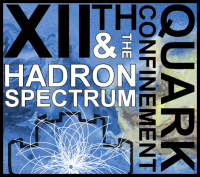Speaker
Description
A new data-driven technique for modelling the QCD multijet background component for analyses which include several jets in their final state is presented and studied in detail. By combining pairs of hemispheres from other events based on a nearest neighbour distance, a new mixed dataset can be constructed which kinematically resembles the majority component of the original mixture. Therefore, when applied to analysis where a small signal fraction is mixed with a much larger background component as the non-resonant $\textrm{hh} \to \textrm{b} \bar{\textrm{b}} \textrm{b} \bar{\textrm{b}}$, this method can be used to provide an accurate modelling of the background shape. Several studies based on fast-simulation which try to investigate the powerfulness and limits of this technique will be provided.
